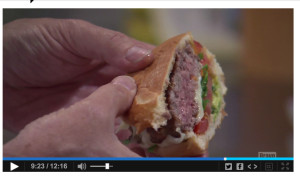Oh, the news stories that catch the eye of one immersed in public health.
While we spend most of our time on this blog discussing issues that have to do with what comes after toilet use (handwashing, hopefully), the toilet facilities themselves occasionally come into the spotlight ….
The Seattle Times recently reported that Seattle has officially “washed its hands” of their self-cleaning public toilets. Which leaves visitors to that city without a convenient place to, uh, relieve themselves – as well as leaving them without a convenient place to wash their hands. 
Too bad Seattle did not work toward finding a way to deal with any problems these public toilets may have caused. Finland found they could reduce/eliminate illicit behavior in their roadside toilets by allowing one to unlock the door by text messaging with a mobile phone. The toilets have been secured, and a sign outside explains that the user just sends the word "open" (in Finish) to a short code and the door will be unlocked remotely. The company managing the service will keep a short-term record of all users’ phone numbers, simply so that if the toilet is then damaged by criminals, they can be traced by the police.
And across the globe, even now, more than 600 cities have automatic public toilets — Singapore alone has 750, London 678, and Athens 500. And there are traditional facilities across the globe as well.
So what’s a tourist in Seattle – or elsewhere — to do? Do you ask a stranger for directions? Advocate for conveniently located facilities? Or map out toilet and handsink locations before you ever leave the comfort of home? How about all three:
• Visiting England? The Public Toilets-Gut Trust recently began a campaign, Can’t Wait, Won’t Wait: Public Toilet provision in the UK to educate stakeholders on need to retain or provide adequate public toilets:
• How about those travels down under? Australia’s National Continence Management Strategy Project readily publishes locations of rest rooms on their searchable public toilet map: www.toiletmap.gov.au
• Traveling wherever the world will take you? The Bathroom Diaries www.thebathroomdiaries.com lists, describes and rates toilet facilities in cities throughout the world. Whether you stay close to home or are planning a trip, say, to China, Turkey or Florida, you can print out a list of public facilities in the cities you plan to visit. One can also enter search terms such as “soap” “changing table” or “don’t eat poop.”
• Do you ever find yourself desperately looking for a clean toilet in the city? MizPee purports to find the closest, cleanest toilets in your area and sends the information to your cell phone. One can add and review rest rooms, and check their toilet paper ratings.
• Then there’s Diaroggle which helps one locate public toilets from a mobile phone. In addition to location, the website includes user ratings for cleanliness, the rules of gaining entrance, and occasionally even pictures snapped by users to show how good or bad the porcelain sanctuary is. According to the site, this is “ for the discerning, on-the-go defecator who is brave enough to use a public bathroom, but still demands a hygienic and private bathroom experience.”
In Seattle or elsewhere, we all can map our comfort breaks along with our travel itineraries. What a wonderful resource for a discerning on-the-go handwasher.
—
Michéle Samarya-Timm is a Health Educator for the Franklin Township Health Department in New Jersey.

 When Tom cuts into the center of Burger #3, the beef-pork mix, it is apparently raw inside. “It’s a little raw dog,” says one competitor. “No! I think that’s a pretty sexy slice right there,” retorts Tom as he gobbles it.
When Tom cuts into the center of Burger #3, the beef-pork mix, it is apparently raw inside. “It’s a little raw dog,” says one competitor. “No! I think that’s a pretty sexy slice right there,” retorts Tom as he gobbles it.


.jpg) voluntarily recalled because they may be contaminated with E. coli O157:H7.
voluntarily recalled because they may be contaminated with E. coli O157:H7..jpg) distributed by Montreal-based Amira Enterprises
distributed by Montreal-based Amira Enterprises Moms willing to experiment have also found good use for
Moms willing to experiment have also found good use for .jpg)
.jpg)


 Ben and Jerry’s
Ben and Jerry’s


.jpg) As
As (1).jpg)
 We thought we might try Acapulco Restaurant, a Mexican franchise in town. That is, until I read on FSnet that the restaurant had just been named as the source of a
We thought we might try Acapulco Restaurant, a Mexican franchise in town. That is, until I read on FSnet that the restaurant had just been named as the source of a